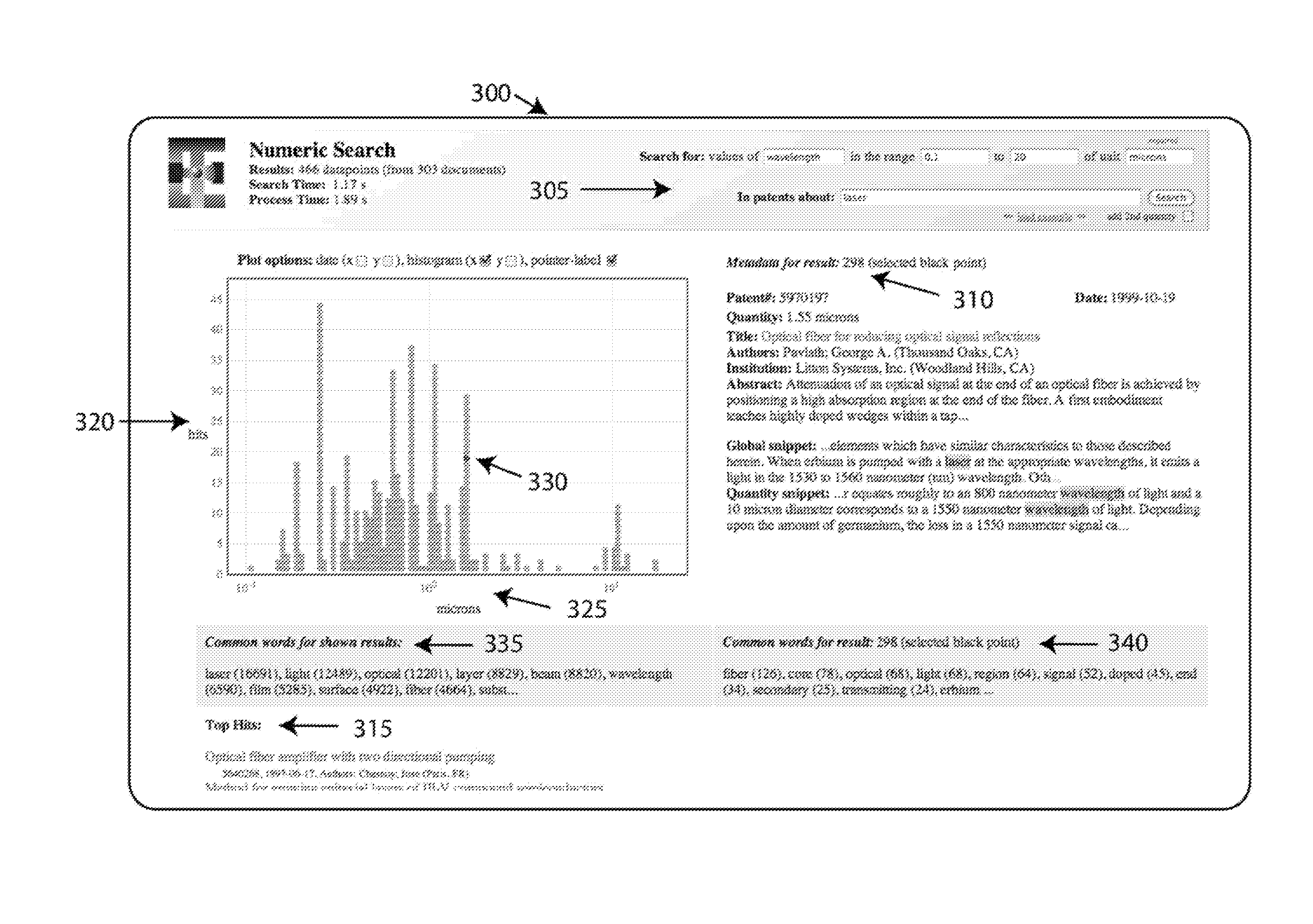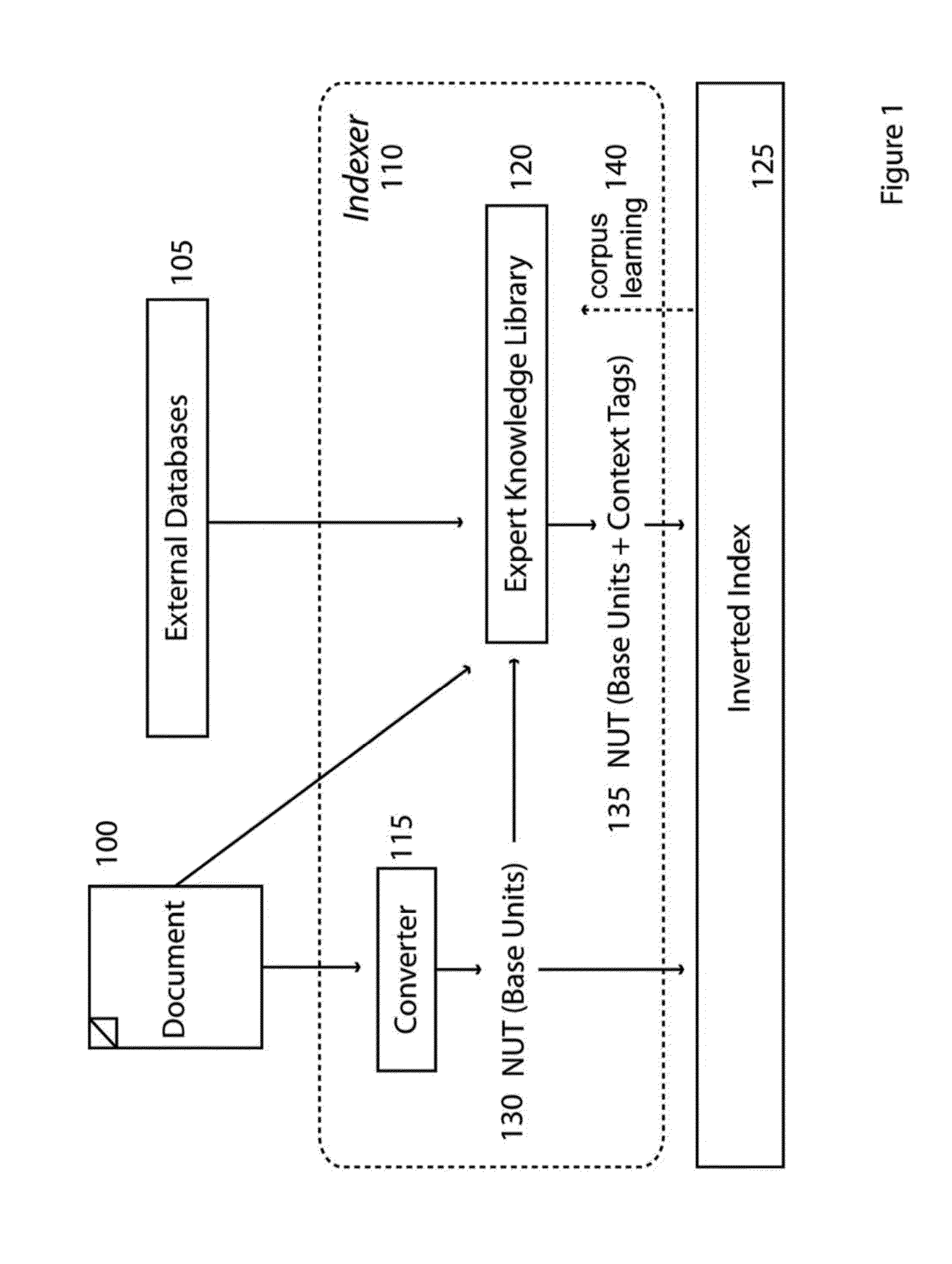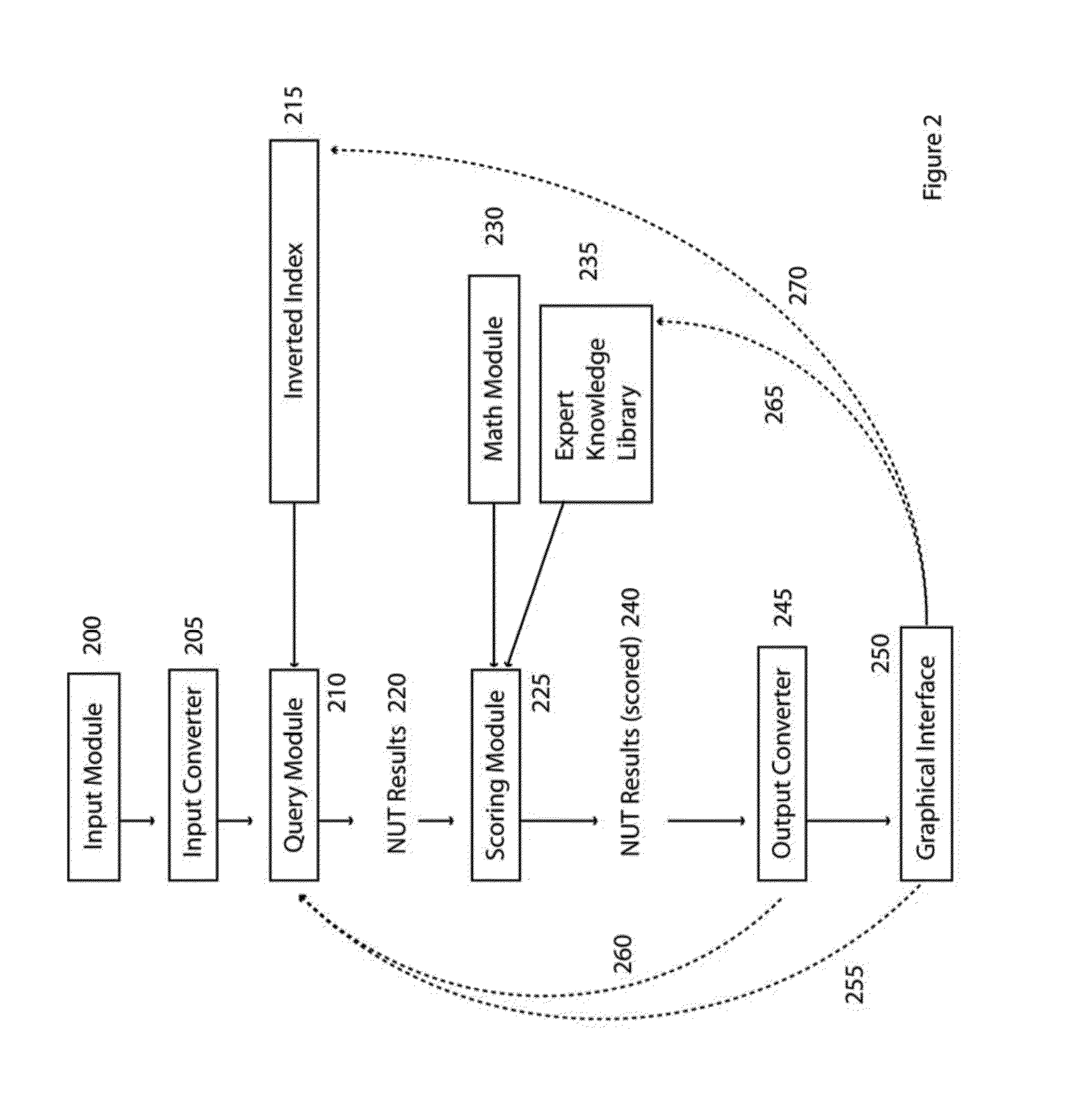System and methods for units-based numeric information retrieval
a numeric information and retrieval system technology, applied in the field of systems and methods for units-based numeric information retrieval, can solve the problems of lack of numeric search capability in general, lack of numeric data extraction from unstructured data specifically, and short of full contextualization, so as to facilitate user visualization and refine the scope of retrieved information.
- Summary
- Abstract
- Description
- Claims
- Application Information
AI Technical Summary
Benefits of technology
Problems solved by technology
Method used
Image
Examples
example
[0068]One particular embodiment for a web-based interface is depicted in FIG. 3. The query user interface 305 shown allows a user to input the desired keywords, both globally and locally describing the context of the quantity, as well as to enter numeric constraints.
[0069]In the top search line the user enters into input module 305 the range of the quantity desired (‘0.1 to 20 microns’) occurring near a local keyword (‘wavelength’). The second quantity option could reveal a second search line. A field for global keyword (‘laser’) can be labeled to indicate the global nature of the keyword. The input lines may be written in a variety of number and unit formats because the same algorithm is used to convert the input as is used to create the index.
[0070]Query module 210 processes the search parameters and identifies potentially relevant NUTs 220, while scoring module 225 ranks the relevancy of all such candidate NUTs 240 (see FIG. 2). The graphical interface 250, 300 plots the value of...
PUM
 Login to View More
Login to View More Abstract
Description
Claims
Application Information
 Login to View More
Login to View More - R&D
- Intellectual Property
- Life Sciences
- Materials
- Tech Scout
- Unparalleled Data Quality
- Higher Quality Content
- 60% Fewer Hallucinations
Browse by: Latest US Patents, China's latest patents, Technical Efficacy Thesaurus, Application Domain, Technology Topic, Popular Technical Reports.
© 2025 PatSnap. All rights reserved.Legal|Privacy policy|Modern Slavery Act Transparency Statement|Sitemap|About US| Contact US: help@patsnap.com



